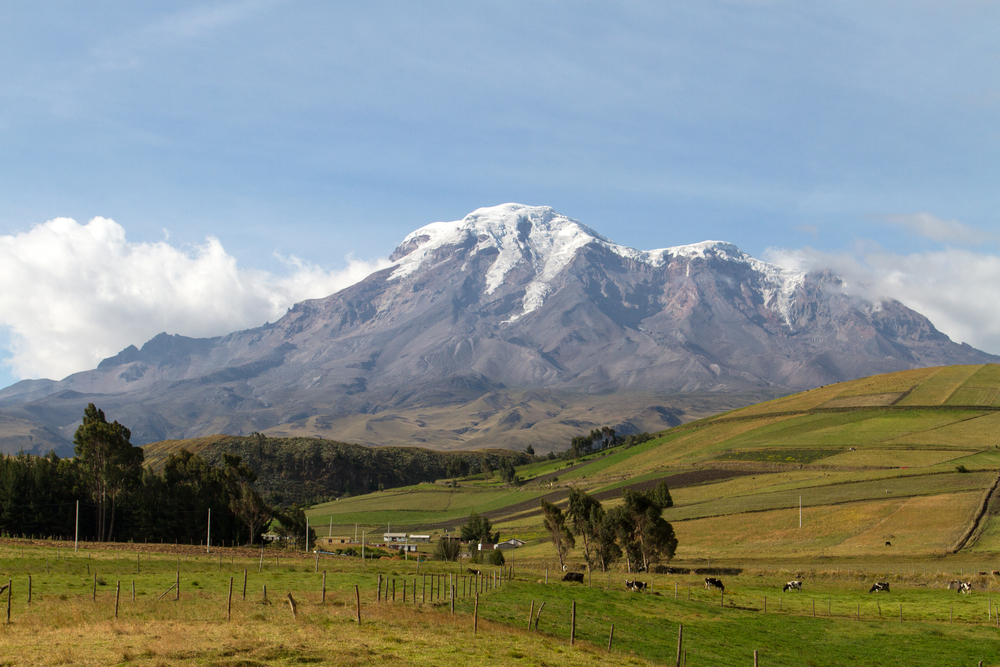Why Are Cordillera De Loss Andes Del Ecuador Mountains So Prominent?
Unveiling the Geological Wonders of Cordillera de los Andes del Ecuador
Cordillera De Los Andes Del Ecuador

The Cordillera de loss Andes del Ecuador, or the Ecuadorian Andes, is a magnificent mountain range that stretches across the spine of Ecuador, forming a dramatic backdrop to this South American nation. These mountains are renowned not only for their breathtaking beauty but also for their prominence in the world of geography, ecology, and adventure. In this blog post, we will delve into the reasons behind the prominence of the Cordillera de los Andes del Ecuador, exploring their geological origins, unique features, and ecological significance.
Geological Origins
To understand why the Cordillera de los Andes del Ecuador is so prominent, we must first look at their geological origins. The Andes mountain range, of which the Ecuadorian Andes are a part, is a result of the complex tectonic interactions between the Nazca Plate and the South American Plate. The Nazca Plate is subducting beneath the South American Plate, leading to the uplift and formation of these towering peaks.
Subduction Zones:
The primary reason for the prominent elevation of the Ecuadorian Andes is the subduction of the Nazca Plate beneath the South American Plate. As the denser Nazca Plate descends into the Earth’s mantle, it generates immense pressure and heat. This leads to volcanic activity and the formation of numerous stratovolcanoes throughout the region, many of which are still active today.
Volcanic Activity:
The Ecuadorian Andes are home to some of the world’s highest and most active volcanoes, such as Cotopaxi, Chimborazo, and Tungurahua. These volcanoes contribute significantly to the overall prominence of the region. Cotopaxi, for example, is one of the world’s highest active volcanoes, standing at 19,347 feet (5,897 meters) above sea level.
Unique Features
The Cordillera de loss Andes del Ecuador boasts several unique features that add to its prominence:
Equatorial Location:
One distinctive aspect of the Ecuadorian Andes is their proximity to the Equator. This equatorial location contributes to the region’s rich biodiversity and unique ecosystems. The Ecuadorian Andes are often referred to as the “Avenue of Volcanoes” due to the concentration of volcanoes along this equatorial belt.
Quilotoa Crater Lake:
The stunning Quilotoa Crater Lake, nestled within the Andes, is a geological wonder that adds to the region’s prominence. This deep volcanic crater, filled with emerald-green water, is a popular attraction and a testament to the region’s volcanic history.
Ecological Significance
Beyond their geological and topographical prominence, the Cordillera de los Andes del Ecuador hold immense ecological significance. The mountains are a hotspot of biodiversity and provide essential ecosystem services.
Biodiversity:
The Andes are a biodiversity hotspot, home to numerous endemic species of flora and fauna. The unique altitudinal gradients in the mountains have given rise to diverse ecosystems, from cloud forests to paramo grasslands, each supporting a wide range of species.
Water Resources:
The Andean mountains serve as a vital source of freshwater for Ecuador and neighboring countries. The pristine rivers and lakes that originate in these mountains provide water for agriculture, industry, and urban areas. Making them crucial for the region’s development.
Cultural Significance:
The Ecuadorian Andes have been inhabited by indigenous communities for centuries. These communities have developed intricate cultures and traditions deeply intertwined with the mountains. The Andes are not only a source of physical prominence but also cultural significance.
Conclusion
The Cordillera de loss Andes del Ecuador’s prominence is a result of a complex interplay of geological forces. Unique features, and ecological significance. Their towering volcanoes, equatorial location, and biodiversity make them a standout feature on the world map. These mountains are not only a testament to Earth’s geological history but also a vital part of Ecuador’s natural and cultural heritage. Whether you are an adventurer, an ecologist, or a culture enthusiast. The Ecuadorian Andes offer an unforgettable experience that is both prominent and profound.




